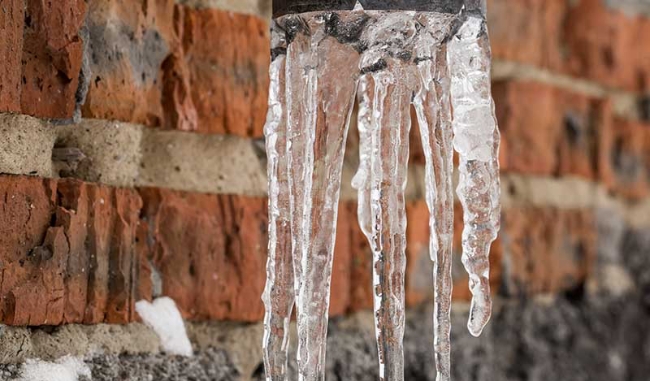How do you actually feel when it comes to Winter Plumbing Precautions: Preventing Frozen Pipes?

Cold weather can wreak havoc on your pipes, especially by freezing pipes. Below's exactly how to avoid it from occurring and what to do if it does.
Introduction
As temperature levels decrease, the risk of frozen pipes rises, possibly resulting in expensive repairs and water damage. Recognizing just how to avoid icy pipes is critical for home owners in chilly climates.
Recognizing Frozen Pipelines
What creates pipes to freeze?
Pipes ice up when exposed to temperature levels listed below 32 ° F (0 ° C) for prolonged durations. As water inside the pipelines ices up, it expands, taxing the pipe walls and potentially triggering them to rupture.
Dangers and damages
Icy pipelines can lead to water supply interruptions, residential or commercial property damage, and pricey repair work. Ruptured pipelines can flood homes and trigger extensive architectural damages.
Signs of Frozen Water Lines
Identifying frozen pipes early can prevent them from bursting.
How to recognize frozen pipelines
Search for lowered water circulation from faucets, unusual smells or sounds from pipes, and visible frost on subjected pipes.
Prevention Tips
Insulating vulnerable pipelines
Wrap pipes in insulation sleeves or make use of warmth tape to secure them from freezing temperatures. Concentrate on pipes in unheated or external areas of the home.
Home heating methods
Maintain interior rooms adequately heated up, especially areas with plumbing. Open up cabinet doors to permit warm air to flow around pipes under sinks.
Securing Outdoor Plumbing
Yard hoses and outdoor faucets
Detach and drain pipes yard hose pipes prior to winter. Set up frost-proof spigots or cover outdoor taps with protected caps.
What to Do If Your Pipes Freeze
Immediate activities to take
If you think icy pipelines, maintain taps available to eliminate pressure as the ice thaws. Use a hairdryer or towels soaked in hot water to thaw pipelines slowly.
Long-Term Solutions
Architectural changes
Take into consideration rerouting pipes away from exterior wall surfaces or unheated areas. Add added insulation to attics, basements, and crawl spaces.
Upgrading insulation
Buy top quality insulation for pipes, attic rooms, and wall surfaces. Appropriate insulation helps maintain consistent temperature levels and reduces the danger of icy pipes.
Final thought
Preventing icy pipelines calls for positive steps and quick feedbacks. By understanding the reasons, indications, and safety nets, home owners can safeguard their plumbing during winter.
5 Ways to Prevent Frozen Pipes
Drain Outdoor Faucets and Disconnect Hoses
First, close the shut-off valve that controls the flow of water in the pipe to your outdoor faucet. Then, head outside to disconnect and drain your hose and open the outdoor faucet to allow the water to completely drain out of the line. Turn off the faucet when done. Finally, head back to the shut-off valve and drain the remaining water inside the pipe into a bucket or container. Additionally, if you have a home irrigation system, you should consider hiring an expert to clear the system of water each year.
Insulate Pipes
One of the best and most cost-effective methods for preventing frozen water pipes is to wrap your pipes with insulation. This is especially important for areas in your home that aren’t exposed to heat, such as an attic. We suggest using foam sleeves, which can typically be found at your local hardware store.
Keep Heat Running at 65
Your pipes are located inside your walls, and the temperature there is much colder than the rest of the house. To prevent your pipes from freezing, The Insurance Information Institute suggests that you keep your home heated to at least 65 degrees, even when traveling. You may want to invest in smart devices that can keep an eye on the temperature in your home while you’re away.
Leave Water Dripping
Moving water — even a small trickle — can prevent ice from forming inside your pipes. When freezing temps are imminent, start a drip of water from all faucets that serve exposed pipes. Leaving a few faucets running will also help relieve pressure inside the pipes and help prevent a rupture if the water inside freezes.
Open Cupboard Doors
Warm your kitchen and bathroom pipes by opening cupboards and vanities. You should also leave your interior doors ajar to help warm air circulate evenly throughout your home.

I have been very enthusiastic about How to prepare your home plumbing for winter weather and I hope you appreciated the new blog entry. Those who liked our blog entry kindly consider to pass it around. We thank you for your readership.
Get A Free Quote